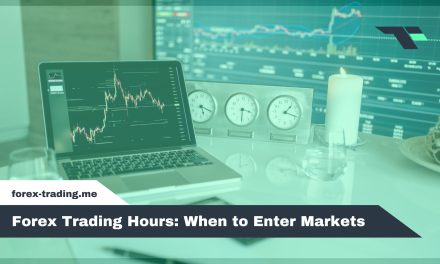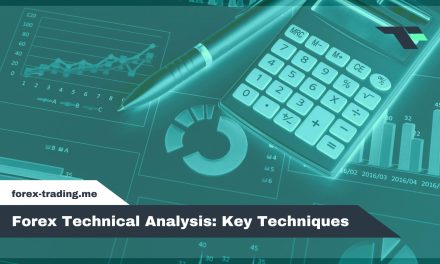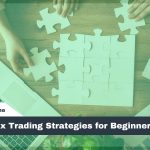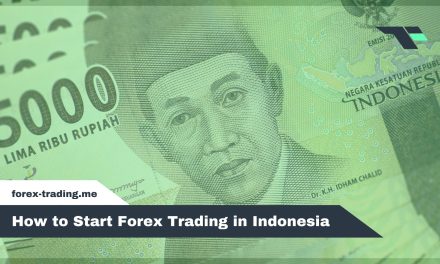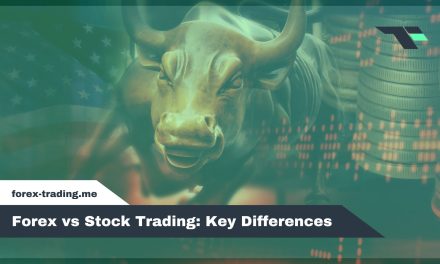
Forex vs Stocks: Which Market to Choose?

Choosing between forex and stock trading depends on individual preferences and risk tolerance. Forex offers 24-hour access, higher leverage up to 500:1, and $6.6 trillion daily volume, making it suitable for short-term strategies. Stock markets provide more predictable long-term growth opportunities with lower leverage of 2:1, fixed trading hours, and extensive fundamental analysis options. Forex emphasizes technical analysis with tighter spreads, while stocks benefit from both technical and fundamental research approaches. Understanding these key differences will help traders make informed decisions.
Table of Contents
Market Access & Liquidity: Forex vs Stocks
Market accessibility and liquidity represent fundamental differences between forex and stock trading that directly impact execution quality and strategic flexibility. The forex market operates continuously during weekdays with massive daily volumes exceeding $6.6 trillion, while stock markets function within specific business hours and generate comparatively lower daily trading volumes of approximately $200 billion. These structural variations create distinct environments for order execution, instrument availability, and the range of trading strategies that traders can effectively implement in each market.
Trading Hours & Available Instruments
When examining accessibility and timing, forex trading operates on a fundamentally different schedule than equity markets, creating distinct advantages and limitations for each asset class.
Forex markets provide continuous trading through four overlapping global sessions: Tokyo, London, New York, and Sydney. This 24-hour structure accommodates traders across time zones and enables immediate responses to global events. Currency pairs like EUR/USD, GBP/JPY, and USD/CAD remain accessible throughout weekdays.
Stock markets operate within fixed sessions, with U.S. equities trading from 9:30 AM to 4:00 PM Eastern Time. This structure offers:
- Concentrated liquidity during regular hours
- Clear market open and close for strategic planning
- Thousands of individual stocks across multiple sectors
Each market’s timing affects trading strategies, with forex favoring flexibility and stocks providing structured sessions for focused analysis.
Order Types & Execution Quality
Both forex and stock markets offer essential order types that enable traders to control entry and exit points, though execution quality varies markedly between these markets due to their underlying structures.
Standard order types include market orders for immediate execution, limit orders for specific price targets, and stop orders for risk management. Forex markets typically provide superior execution speed due to electronic matching systems and continuous operation, with minimal slippage during normal conditions. However, major news events can cause temporary liquidity gaps.
Stock markets face execution challenges during market opens, closes, and volatile periods, particularly for smaller-cap securities. While major stocks enjoy excellent liquidity, execution quality depends heavily on market makers and available volume. Forex generally offers more predictable execution costs, whereas stock execution varies markedly by exchange, broker routing, and individual security characteristics.
Here’s a quick comparison to help you weigh the practical implications of market structure and liquidity when choosing between forex and stocks:
| Aspect | Forex | Stocks | Why It Matters |
|---|---|---|---|
| Trading Hours | 24 × 5 across Tokyo, London, New York & Sydney sessions | 9:30 AM–4 PM ET (U.S. equities); similar fixed hours worldwide | Continuous access supports around-the-clock reaction to news |
| Average Daily Volume | Over $6.6 trillion | Around $200 billion | Deeper liquidity in FX generally means tighter pricing |
| Instrument Availability | Major & minor currency pairs (e.g. EUR/USD, GBP/JPY) | Thousands of single stocks across sectors | Stocks allow targeted sector bets; FX offers macro exposure |
| Execution Quality & Slippage | Near-instant electronic matching; low slippage in normal conditions | High liquidity for large-caps; variable execution on opens, closes & small-caps | Predictable costs in FX vs. potential gaps in stock trading |
Use this breakdown to match your preferred trading style—whether you need nonstop flexibility, sector-specific plays, or the most predictable execution.
Trading Costs & Fees: Forex vs Stocks
Trading costs greatly impact net returns and vary substantially between forex and stock markets, making fee structures a critical consideration for traders evaluating these markets. While forex trading typically involves spreads between bid and ask prices rather than traditional commissions, stock trading often features commission-based fee structures alongside market spreads that can affect execution costs. Understanding the complete cost landscape, including hidden fees such as rollover charges in forex and slippage in both markets, enables traders to accurately calculate their true trading expenses and optimize their market selection.
Spreads & Commission Structures
Although brokers in different markets employ distinct fee structures, understanding these cost models proves essential for calculating true trading expenses. Forex brokers typically embed their compensation within bid-ask spreads, meaning traders pay the difference between buying and selling prices without separate commission charges. This spread-only model creates transparency since costs remain visible in real-time pricing.
Stock brokers traditionally charge per-share or per-trade commissions alongside market spreads. Commission structures vary considerably:
- Fixed per-trade fees – flat rates regardless of position size
- Per-share pricing – costs multiply with share quantity
- Tiered commission schedules – rates decrease with higher trading volumes
Some modern stock brokers offer commission-free trading while earning revenue through payment for order flow. Forex’s spread-only approach generally provides simpler cost calculations, while equity commission models require careful evaluation of trading frequency and position sizes.
Slippage, Rollover & Hidden Fees
Beyond visible spreads and commissions, traders encounter additional costs that considerably impact profitability across both markets. Slippage occurs when orders execute at prices different from expected levels, particularly during volatile periods or news releases. Forex markets, despite higher liquidity, experience slippage during major announcements, while stock markets face greater slippage risks during earnings reports or market opens.
Forex traders must consider rollover interest, also called swap rates, charged for holding positions overnight. These costs vary based on interest rate differentials between currency pairs and can accumulate considerably over time. Stock traders avoid rollover fees but may face overnight gap risks.
Hidden broker fees include inactivity charges, withdrawal fees, and data feed costs. Some brokers widen spreads during volatile periods or charge conversion fees for international stock purchases, making thorough fee structure analysis essential.
Below is a streamlined comparison to illuminate how fee structures and hidden costs differ between forex and stock trading, helping you pinpoint true expenses before placing a trade:
| Aspect | Forex | Stocks | Why It Matters |
|---|---|---|---|
| Fee Structure | Spread-only pricing built into bid-ask spread | Commission per trade/share + bid-ask spread | Transparent real-time costs vs. variable commission impact |
| Commission Models | No separate commissions | Flat fees, per-share rates, tiered schedules or $0 (PFOF) | Trading frequency heavily influences total equity costs |
| Hidden Charges | Rollover/swap rates for overnight positions; inactivity fees | Payment for order flow, data feed, withdrawal & inactivity fees | Unseen fees can quietly erode returns over time |
| Slippage & Execution Costs | Low slippage in normal conditions; news spikes possible | Variable slippage at opens, closes and earnings | Knowing potential price differences is key for precision |
Capital, Leverage & Risk: Forex vs Stocks
Capital requirements and leverage capabilities differ markedly between forex and stock markets, with forex typically offering higher leverage ratios that can amplify both potential profits and losses. Understanding margin requirements becomes vital since forex brokers may provide leverage up to 50:1 for retail clients in regulated markets, while stock traders generally access maximum leverage of 2:1 through margin accounts. These fundamental differences in leverage and capital structure directly impact position sizing strategies and risk management approaches, making it essential for traders to understand how stop-loss mechanisms and psychological factors influence decision-making in each market.
Margin Requirements & Position Sizing
When traders evaluate forex and stock markets, understanding margin requirements and position sizing becomes fundamental to developing an effective trading strategy. Forex markets typically offer higher leverage ratios, often ranging from 50:1 to 500:1, requiring smaller initial margin deposits compared to stock trading. Stock markets generally require higher capital commitments, with margin requirements typically set at 25-50% of the position value.
Position sizing varies notably between markets:
- Forex lots – Standard lots represent 100,000 units of base currency, with mini and micro lots available
- Stock shares – Traders purchase individual shares without standardized lot sizes
- Maintenance margins – Forex requires minimal maintenance margins, while stocks demand higher ongoing capital reserves
These differences directly impact risk management strategies, as forex’s lower margin requirements can amplify both profits and losses more dramatically than traditional stock investments.
Stop-Loss Strategies & Trader Psychology
Discipline separates successful traders from those who consistently struggle with mounting losses, making stop-loss strategies and psychological preparedness essential components of any trading approach. Both forex and stock markets require traders to implement stop-loss orders, but their execution differs considerably between markets. Forex traders benefit from tighter spreads and 24-hour liquidity, allowing more precise stop-loss placement and reduced slippage during volatile periods. Stock traders face gap risks from overnight news and earnings announcements that can trigger stop-losses at unfavorable prices.
Drawdown control becomes particularly challenging in forex due to higher leverage amplifying emotional stress. Trading psychology demands greater discipline in currency markets where rapid price movements can quickly erode capital. Stock traders typically experience more gradual losses, providing additional time for emotional adjustment and strategic decision-making during adverse market conditions.
Below is a concise comparison to highlight how capital, leverage and risk dynamics differ in forex versus stock trading—equipping you to tailor position sizing and risk controls to your strategy:
| Aspect | Forex | Stocks | Why It Matters |
|---|---|---|---|
| Leverage Ratios | Up to 50:1 (retail Europe) or 500:1 (some offshore) | Typically 2:1 via margin accounts | Higher leverage magnifies gains and losses |
| Initial & Maintenance Margin | Initial deposit as low as 2%; minimal maintenance margin | Initial margin 25–50%; higher maintenance requirements | Determines capital needed and margin call risk |
| Position Sizing | Standard (100,000 units), mini (10,000), micro (1,000) lots | Individual shares; no standardized lot sizes | Lot sizes simplify FX sizing; stocks require share-based math |
| Risk Controls & Psychology | Tight stop-loss placement, 24-hour liquidity; rapid drawdowns | Wider stop-loss gaps from overnight moves; gradual losses | FX demands stronger discipline; stocks offer breathing room |
Use this overview to calibrate your capital commitment, choose appropriate leverage, and apply stop-loss tactics that align with each market’s risk profile.
Analysis Tools & Platforms: Forex vs Stocks
Success in either forex or stock trading depends heavily on selecting the appropriate analysis methods and technological infrastructure to support decision-making processes. Both markets offer distinct analytical frameworks, with forex trading typically emphasizing technical analysis due to shorter timeframes, while stock trading often incorporates more fundamental company research alongside chart patterns. The choice of trading platforms, charting software, and mobile applications can greatly impact execution speed, data quality, and overall trading performance across both asset classes.
Technical vs Fundamental Analysis
While both forex and stock markets offer opportunities for technical and fundamental analysis, each market’s unique characteristics make certain analytical approaches more effective than others.
Technical analysis dominates forex trading due to the market’s high liquidity and rapid price movements. Currency pairs respond quickly to candlestick patterns, momentum indicators, and support-resistance levels, making chart-based strategies particularly effective. Economic releases like employment data and central bank announcements drive fundamental analysis in forex.
Stock markets benefit equally from both approaches. Technical analysis helps identify entry and exit points through price patterns and volume indicators. Fundamental analysis examines earnings reports, company financials, and industry trends to determine intrinsic value.
Key analytical considerations include:
- Forex favors technical analysis for short-term trading decisions
- Stocks require balanced approaches combining technical and fundamental methods
- Economic indicators impact both markets but affect currencies more immediately
Platforms, Charting Tools & Mobile Apps
Trading platforms and analytical tools represent one of the most significant differentiators between forex and stock markets, with each market offering specialized software solutions tailored to their unique trading environments. Forex traders mainly rely on MetaTrader 4 and 5, which provide thorough charting capabilities, automated trading features, and extensive customization options specifically designed for currency pair analysis.
Stock traders typically utilize platforms like TradingView, Bloomberg Terminal, or brokerage-specific applications that offer real-time market data, fundamental analysis tools, and portfolio management features. Mobile trading apps have become essential for both markets, enabling traders to monitor positions and execute trades remotely. The choice between platforms often depends on trading style, required analytical depth, and budget considerations, as professional-grade tools like Bloomberg Terminal command premium pricing while many forex platforms offer free access.
Below is a quick-reference table to help you choose the right analysis approach and technology stack for your trading style:
| Aspect | Forex | Stocks | Why It Matters |
|---|---|---|---|
| Primary Analysis Focus | Technical patterns, momentum indicators | Blend of chart patterns and fundamental company data | Aligns research depth with market drivers |
| Platform Preferences | MetaTrader 4/5 with automated scripts | TradingView, Bloomberg, broker portals | Ensures access to specialized tools and custom features |
| Mobile Access & Alerts | Free apps with real-time price feeds and EAs | Brokerage apps, portfolio trackers, news integration | Keeps you connected and ready to act on market moves |
| Data Quality & Cost | Low-cost or free charting, some paid signal services | Free basic tools, premium subscriptions for professional data | Balances budget with the need for accurate, timely insights |
Time Horizon & Volatility: Forex vs Stocks
Trading success depends heavily on matching market characteristics to individual time preferences and risk tolerance levels. Stock markets typically exhibit higher annualized volatility at 15-20% but offer more predictable long-term growth patterns, while forex markets show lower annual volatility of 5-10% yet can experience dramatic 1% intraday swings that demand constant attention. Understanding these volatility dynamics becomes essential for developing appropriate risk management strategies and determining whether short-term tactical approaches or long-term investment horizons better suit specific trading objectives.
Short-Term vs Long-Term Strategies
Two fundamental approaches define how traders engage with both forex and stock markets: short-term strategies that capitalize on rapid price movements, and long-term strategies that focus on sustained value appreciation over extended periods.
Short-term forex strategies excel due to 24-hour market access and high liquidity. Scalping benefits from tight spreads and constant price action, while swing trading leverages currency cycles lasting days to weeks. The forex market’s responsiveness to economic news creates frequent intraday opportunities.
Stock markets favor longer timeframes through fundamental analysis and company growth potential. Position trading and buy-and-hold strategies work effectively with stocks because:
- Dividend income provides additional returns during holding periods
- Compound growth amplifies gains through reinvestment over years
- Economic expansion drives long-term corporate value appreciation
Each market’s structure naturally supports different temporal approaches.
Volatility Dynamics & Risk Controls
Market volatility presents distinct challenges across forex and stock markets, requiring traders to understand how sudden price movements manifest differently in each environment and implement corresponding risk management frameworks. Forex markets typically experience smoother volatility patterns due to massive daily volume exceeding $7 trillion, though currency pairs can spike during economic announcements or geopolitical events. Stock markets often display more erratic volatility, particularly during earnings seasons or sector-specific news affecting individual companies.
Effective risk controls include volatility stops that automatically close positions when price movements exceed predetermined thresholds, value-at-risk calculations to quantify potential losses, and hedging strategies using correlated instruments. Risk limits should account for each market’s unique characteristics, with forex traders focusing on interest rate differentials and stocks requiring sector-specific considerations for extensive portfolio protection.
Below is a concise comparison to help you align your trading horizon and risk controls with each market’s volatility profile:
| Aspect | Forex | Stocks | Why It Matters |
|---|---|---|---|
| Annualized Volatility | 5–10% | 15–20% | Higher stock volatility can mean bigger swings and bigger gains over years |
| Intraday Price Swings | Up to 1% per session during news events | Varies by sector; spikes around earnings or news releases | Forex demands rapid decision-making; stocks allow more breathing room |
| Short-Term Strategy Fit | Scalping & swing trading around the clock | Day trading rare; limited to market hours | Continuous FX access supports quick trades; stocks suit planned sessions |
| Long-Term Strategy Fit | Less common; carries overnight swap costs | Buy-and-hold, dividends, compound growth | Stocks reward patience and reinvestment; FX costs accumulate over time |
| Risk Controls | Volatility stops, value-at-risk, tight SL orders | Hedging with options, sector diversification, V-a-R | Tailor stops and hedges to each market’s move patterns |
Use this breakdown to choose tactics—whether you seek fast, news-driven forex scalps or steady, dividend-enhanced stock investments.
Taxation & Regulation: Forex vs Stocks
The regulatory landscape for forex and stock trading varies greatly across jurisdictions, with each market subject to distinct oversight bodies and compliance requirements that directly impact trader obligations. Tax treatment differs considerably between the two markets, as forex gains may be classified as ordinary income in some regions while stock profits often qualify for preferential capital gains rates depending on holding periods. Understanding these regulatory frameworks and tax implications becomes essential for traders seeking to optimize their after-tax returns and guarantee full compliance with reporting thresholds and documentation requirements.
Jurisdictional Rules & Reporting
Both forex and stock markets operate under distinct regulatory frameworks that impose specific registration, reporting, and compliance obligations on brokers and traders. These jurisdictional requirements vary greatly between market types and geographic regions.
Forex brokers typically face less stringent registration requirements compared to stock brokers, though they must still comply with Know Your Customer (KYC) protocols and anti-money laundering regulations. Stock brokers generally undergo more thorough licensing processes and face stricter oversight from securities commissions.
Key reporting obligations include:
- Trade reporting – Real-time transaction data submission to regulatory authorities
- Audit trail maintenance – Detailed record-keeping of all trading activities and client interactions
- Financial disclosure – Regular reporting of capital adequacy, client funds segregation, and risk metrics
Compliance costs and administrative burdens often prove higher for stock market participants due to more extensive regulatory frameworks governing securities trading.
Tax Rates & Compliance Procedures
Significant differences exist between forex and stock taxation structures, creating distinct compliance obligations that traders must navigate based on their chosen market and jurisdiction. Stock traders typically report gains and losses on Form 8949, with profits subject to capital gains tax rates that vary based on holding periods. Short-term gains face ordinary income tax rates, while long-term positions often qualify for reduced rates.
Forex trading presents more complex tax scenarios, as currency transactions may be subject to different treatment depending on classification as capital gains or ordinary income. Additionally, some jurisdictions impose VAT on foreign exchange services, while withholding taxes may apply to international stock dividends. Traders must maintain detailed records for tax return preparation and guarantee compliance with reporting requirements specific to their trading activities.
Navigating the regulatory maze and tax nuances can make or break your bottom line. Here’s how forex and stock traders differ in oversight, reporting, and taxation:
| Aspect | Forex | Stocks | Why It Matters |
|---|---|---|---|
| Regulatory Oversight | FX-specific regulators (e.g., NFA, FCA FX) focus on currency safeguards | Securities commissions (e.g., SEC, ESMA) enforce broad market rules | Shapes broker accountability, capital requirements, and investor protection |
| Registration & Compliance | Lighter licensing but strict KYC/AML checks | Rigorous broker licensing, capital adequacy, and client-fund segregation | Impacts operational costs and reliability of your trading partner |
| Reporting Obligations | Periodic swap disclosures and simplified trade logs | Real-time trade reporting and detailed audit trails | Balances transparency against administrative overhead |
| Tax Classification | Often treated as ordinary income or Section 988 gains | Short-term trades taxed at income rates; long-term enjoy lower capital gains | Influences strategy around trade duration and tax efficiency |
| Record-Keeping Requirements | Track daily P&L, swap rates, and any VAT on FX services | Maintain Form 8949 records, dividend statements, and wash-sale logs | Accurate records prevent penalties and uncover deductible expenses |
Use this side-by-side guide to align your trading strategy with the compliance and tax framework that best preserves your profits.
Unique Insights & Stats: Forex vs Stocks
Recent market data reveals compelling trends that distinguish forex and stock trading environments in ways that directly impact trader success. Central bank policy announcements can trigger forex volatility spikes exceeding 25% on the same day, while retail forex account growth has surged approximately 15% annually over the past five years, markedly outpacing traditional stock brokerage expansion. These developments, combined with emerging market innovations like algorithmic trading platforms and mobile accessibility improvements, have fundamentally altered the competitive landscape between these two major trading arenas.
Central Bank Policy Impacts
When central banks announce policy changes, forex markets typically experience immediate and pronounced reactions, as currency values directly reflect interest rate expectations and monetary policy stances across different economies.
Fed rate hikes strengthen the dollar by increasing yield differentials, while quantitative easing programs typically weaken currencies through increased money supply. Stock markets show more complex responses to monetary policy changes.
The transmission mechanisms differ markedly between markets:
- Forex responds instantly to rate differential changes, with carry trades flowing toward higher-yielding currencies
- Stocks react variably depending on sector exposure, with financial stocks benefiting from rising rates while growth stocks often decline
- Policy volatility creates divergent opportunities, as forex traders capitalize on currency pair movements while equity investors assess corporate earnings impacts
These fundamental differences make central bank calendars essential for both market participants.
Retail FX Growth & Market Innovations
Revolutionary fintech developments have transformed retail participation across both forex and equity markets, with social trading platforms experiencing 300% growth since 2020 while fractional share investing has democratized stock ownership for millions of previously excluded participants. Algorithmic trading tools, once exclusive to institutional players, now enable individual traders to execute sophisticated strategies across both markets. Copy-trading features allow novice forex participants to mirror experienced traders’ positions automatically, while commission-free stock trading apps have eliminated traditional barriers to equity market entry. These innovations have particularly benefited the forex market, where retail volume now represents approximately 5.5% of daily turnover, compared to minimal participation decades ago. Mobile-first platforms continue driving accessibility, enabling real-time market participation from anywhere globally.
Market disruptors and technology breakthroughs are rewriting the rules for both forex and stock traders. Below is a focused comparison of how central-bank policy shocks and fintech-driven retail trends are creating new opportunities—and risks—in each market:
| Aspect | Forex | Stocks | Why It Matters |
|---|---|---|---|
| Volatility Spike | >25% intraday on announcement days | Sector-specific swings; financials up, growth down | Identifies where you’ll see the biggest immediate moves |
| Policy-Driven Opportunities | Instant carry-trade shifts toward higher-yield currencies | Variable impact by sector; earnings influence reactions | Guides which markets to favor around central-bank events |
| Retail Growth & Participation | Accounts up ~15% annually; now 5.5% of daily turnover | Fractional shares boost participation but growth slower | Highlights where retail traders find the most momentum |
| Fintech Innovations | 300% rise in social/copy-trading platforms since 2020 | Commission-free apps and fractional investing democratize access | Shows which tools are leveling the playing field |
Use these insights to time your entries around policy calendars and leverage the latest retail-tech trends for an edge in either market.
Conclusion & Recommendations: Forex vs Stocks
After examining the fundamental differences between forex and stock markets, traders must align their choice with their specific goals, available capital, and risk tolerance. The decision ultimately depends on whether an investor prioritizes the 24-hour accessibility and high leverage of currency trading or prefers the ownership benefits and long-term growth potential of equity investments. Understanding these core distinctions enables traders to develop a focused strategy that matches their financial objectives and trading style.
Aligning Market Choice with Trader Goals
How does a trader determine which market aligns most effectively with their specific financial objectives and risk parameters? The decision requires careful evaluation of personal circumstances, trading experience, and long-term financial goals.
Successful market selection depends on three critical alignment factors:
- Capital availability and leverage comfort – Forex suits smaller accounts with high leverage tolerance, while stocks require larger capital for meaningful diversification
- Time commitment and trading schedule – Forex’s 24-hour availability favors flexible schedules, whereas stock markets suit traditional business hours
- Risk tolerance and volatility preference – Conservative investors often prefer stock fundamentals and dividend income, while aggressive traders may favor forex’s currency volatility
Traders seeking steady income through dividends typically gravitate toward stocks, while those pursuing short-term speculation often choose forex. Portfolio diversification goals may necessitate exposure to both markets.
Key Takeaways & Next Steps
While both forex and stock markets offer legitimate pathways to trading success, the ideal choice depends entirely on individual circumstances, capital constraints, and risk tolerance levels. Traders with limited capital and preference for 24-hour accessibility typically gravitate toward forex markets, while those seeking long-term wealth building through company ownership favor stocks. Key decision factors include available trading hours, leverage requirements, fundamental analysis complexity, and diversification preferences. Before committing real capital, prospective traders should complete essential preparation steps: opening demo accounts to test strategies, researching reputable brokers with appropriate regulatory oversight, and developing thorough trading plans with clear risk management protocols. Starting with paper trading allows skill development without financial exposure, creating foundation knowledge necessary for eventual live market participation.


